Search for lenses, articles and help
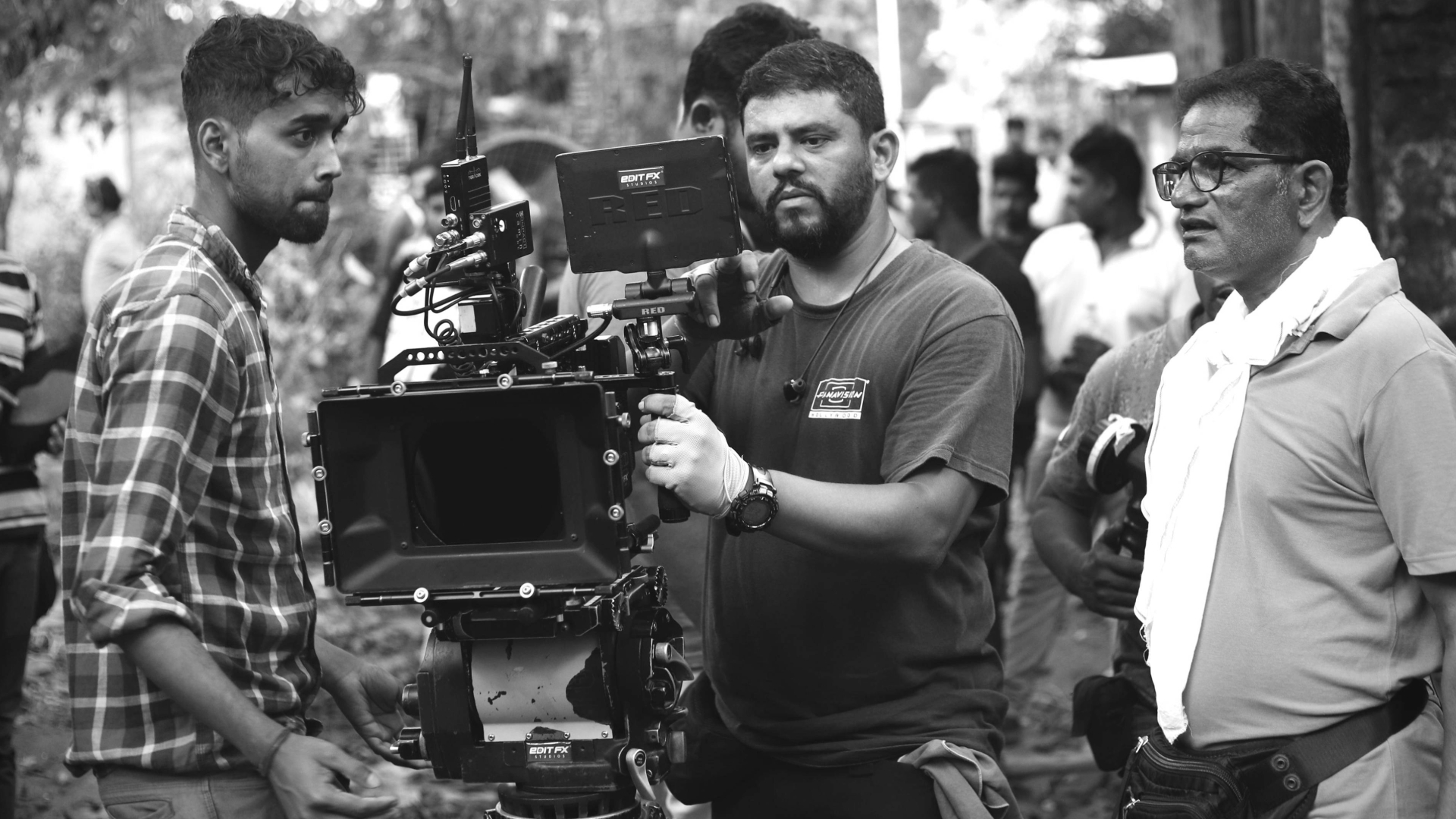
Satyajit Ray’s Apu Trilogy stands as one of the most revered works in world cinema – a deeply humanistic exploration of life, love, and loss. Decades after its conclusion, Avijatrik (The Wanderlust of Apu), directed by Subhrajit Mitra, continues Apu’s journey with a vision that is both an homage and a reimagining. At the heart of its visual storytelling is Cinematographer Supratim Bhol, ISC whose commitment to authenticity and poetic imagery breathes new life into Ray’s legacy.
For Supratim Bhol, Avijatrik was not just a film but a profound creative journey—one that demanded a meticulous recreation of a bygone era, an emotionally resonant visual language, and a deep respect for the craft of classical cinematography that lead to win National Award for Best Cinematography.
“The Cooke look is irreplaceable. It’s not just about capturing images but evoking emotions—the way the lenses handle tonal range, the softness, and the warmth they bring to every frame.”
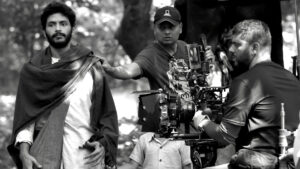
Avijatrik
Stepping into the world of The Apu Trilogy came with immense responsibility. Ray’s films are celebrated for their neorealist aesthetic, evocative compositions, and profound emotional depth. Rather than imitating Ray’s style, Bhol sought to extend it—evolving Apu’s world while staying true to its spirit.
“We were not replicating Satyajit Ray’s frames but rather channeling his philosophy,” Supratim Bhol explains. Collaborating closely with director Subhrajit Mitra, he crafted a visual language that felt timeless yet distinctly original—one that resonated with Ray’s
humanistic storytelling while embracing contemporary cinematic sensibilities.
Set in the 1940s, Avijatrik required an immersive recreation of pre-independence India. The challenge was monumental—modern landscapes bore little resemblance to the past, requiring extensive location scouting to find settings untouched by time.
Supratim Bhol, along with Veteran production designer Gautham Basu, meticulously curated each frame to reflect historical accuracy. From the labyrinthine alleys of Benares to the misty terrains of North Bengal, every location was chosen for its ability to transport audiences into Apu’s world. “We wanted viewers to experience the past—to feel the textures, sense the light, and absorb the atmosphere,” says Supratim Bhol
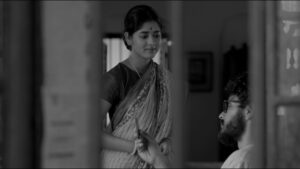
Avijatrik
A defining visual choice for Avijatrik was its black-and-white cinematography—an homage to The Apu Trilogy and a departure from contemporary cinematic trends. Initially considering RED’s monochrome Brain, Supratim Bhol ultimately opted for color capture with a meticulous grayscale conversion in post-production, ensuring a refined balance of contrast, shadow depth, and luminosity. “Black-and-white is not merely an aesthetic decision—it’s an emotional one,” Supratim Bhol explains. “It distills the image to its purest form, emphasizing textures, contrasts, and, most importantly, human emotion.”
Supratim Bhol’s approach to lighting is deeply methodical. He begins by understanding the background, then builds the lighting from the foreground, moving through the middle ground, and finally integrating the background. This layered approach creates depth and immersion, ensuring that every frame carries a strong sense of place and mood.
To recreate the warmth and imperfection of 1940s lighting, he avoided modern LEDs, instead opting for period-appropriate sources such as filament bulbs, oil lamps, and hurricane lanterns. Indoor sequences were bathed in the organic glow of tungsten lighting, while exteriors were shot predominantly during golden hours to harness natural gradients.
“Lighting should serve the narrative,” says Supratim Bhol. “A flickering lamp in a small room, the way monsoon clouds diffuse light, or the glow of a filament bulb—these elements define the emotional tone of a scene.”
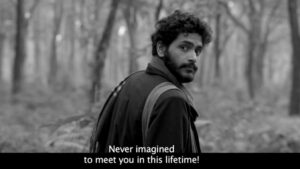
Avijatrik
Supratim Bhol recalls that Avijatrik was his first experience working with Cooke optics. During lens testing, he immediately noticed how well the Cooke S4/i lenses interacted with the glow of incandescent lighting. Their natural softness, subtle flares, smooth contrast, and gentle fall-off played a crucial role in shaping the film’s nostalgic and poetic aesthetic, preserving the intimacy of Apu’s journey.
Since Avijatrik is a story of a father and son, filled with tender emotions, Bhol found that the soft-edged rendering of Cooke lenses beautifully complemented this emotional depth. “The Cooke look is irreplaceable,” Bhol affirms. “It’s not just about capturing images but
evoking emotions—the way the lenses handle tonal range, the softness, and the warmth they bring to every frame.”
As a photographer at heart, Supratim Bhol gravitates toward the 50mm lens—a focal length often favoured by photographers due to its natural perspective and balanced field of view. His approach to lenses is deeply connected to storytelling: he sees them as instruments of intimacy, shaping the viewer’s emotional proximity to a character. “A distant lens creates a sense of observation, while a close lens fosters a deeper connection,” he explains. “Every
lens choice is a private moment within the story.”
Supratim Bhol’s collaboration with director Subhrajit Mitra was built on trust and creative synergy. Together, they crafted moments of profound stillness—such as Apu’s contemplative walks by the riverbank—that echo Ray’s meditative storytelling approach.
“A cinematographer’s role is not just to light a scene—it is to light the character’s inner world,” Supratim Bhol reflects. His approach was rooted in empathy, ensuring that every frame carried an emotional weight beyond its visual composition.
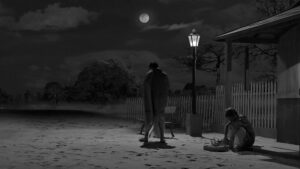
Avijatrik
Supratim Bhol’s journey to Avijatrik was one of resilience and artistic pursuit. Beginning his career as a travel photographer, he developed a keen eye for natural light and composition, often capturing life in remote villages. This early experience deeply influenced his approach to cinematography, shaping his ability to work with available light and create evocative imagery.
His dedication led him to FTII Pune, where he refined his technical skills and cinematic sensibilities. Today, his work on Avijatrik has earned him global recognition, including accolades at the Seattle Film Festival. Yet, for Supratim Bhol, the greatest achievement is the film’s ability to evoke an era long past while remaining emotionally universal.
Avijatrik is more than a film—it is a testament to the enduring power of visual storytelling. For Supratim Bhol, the film’s success lies in its ability to transcend time, allowing audiences to not just see the 1940s, but to feel it.
“A lens is an eye—one that lets us see the past, honor it, and keep it alive,” Supratim Bhol says. Through Avijatrik, he has done precisely that—creating a luminous, deeply humanistic tribute to cinema’s most cherished legacy.